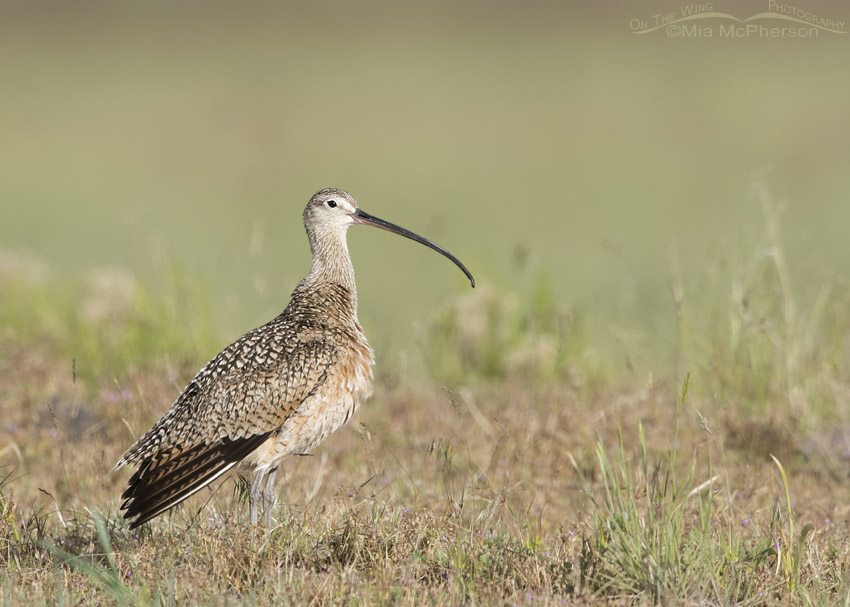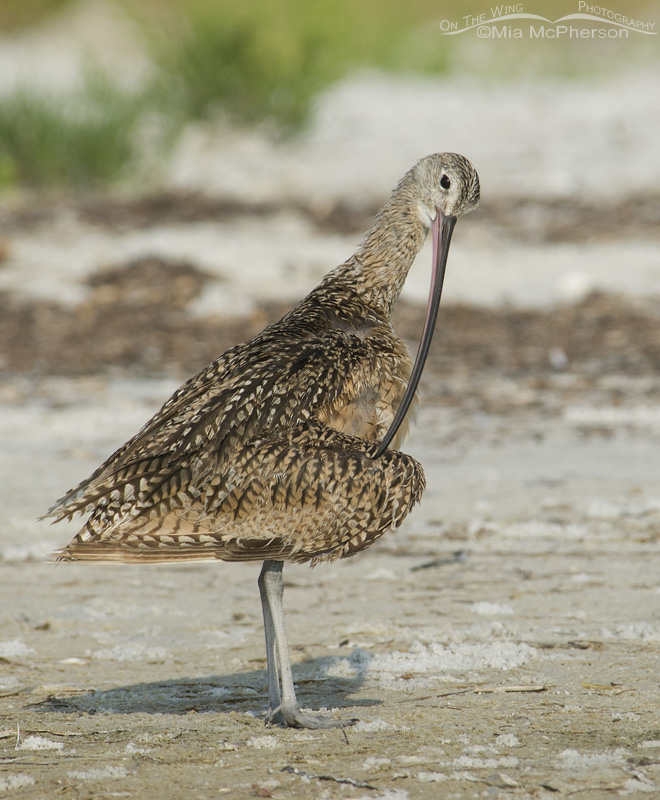 Male Long-billed Curlew in spring grasses – Nikon D810, f6.3, 1/2000, ISO 500, Nikkor 500mm VR with 1.4x TC, natural light
Male Long-billed Curlew in spring grasses – Nikon D810, f6.3, 1/2000, ISO 500, Nikkor 500mm VR with 1.4x TC, natural light
March came in like a gray lamb yesterday, it was supposed to be mostly sunny at 8 am and instead there were gray clouds with perhaps 3% of blue sky peeking through. Wish I could get paid for being so wrong.
The first of March always makes me think of and listen for Long-billed Curlews, our largest shorebird of North America. Their preferred habitat during the breeding season includes shortgrass and mixed grass prairies, grasslands, agricultural fields along with marshes and playas.
The male above was photographed on Antelope Island State Park in Utah which is usually where I hear my first curlew calls of the year. I was out on the island yesterday but didn’t hear or see any curlews. Long-billed Curlews breed on the island and their calls will soon be heard there.
Have a listen.
 Long-billed Curlew preening near the wrack line – Nikon D200, handheld, f7.1, 1/800, ISO 200, Nikkor 80-400mm VR at 400mm, natural light
Long-billed Curlew preening near the wrack line – Nikon D200, handheld, f7.1, 1/800, ISO 200, Nikkor 80-400mm VR at 400mm, natural light
Long-billed Curlews winter in the coastal areas of the southern U.S along the Gulf of Mexico and the Atlantic and Pacific Oceans as far south as Central America and as far north as coastal Washington state.
I used to photograph Long-billed Curlews along the west coast of Florida while I lived there but I never saw them in the large numbers that I see them here in Utah. Last spring I saw a flock of 100+ while at Bear River Migratory Bird Refuge near the Reeder Overflow, it was the largest flock I have ever seen. I wish I could have photographed them but the lighting condition was really poor. A group of curlews can be called a “game”, “salon”, “curfew” or “skein” of curlews, I kind of like the sound of a “curfew of curlews”.
I always miss the curlews when they are gone and I admit to acting like a gleeful child when they return.
Life is good.
Mia
If you would like to listen to a longer recording of Long-billed Curlews I have linked to this one, I know some of you have mentioned how much you like these recordings.





Nice images, especially the one preening, and liked the song. The longer days do make it feel that spring is near!
Such a privilege to see.
The curlew is such an interesting-looking bird…with that long, graceful bill. I love the sounds they make–almost sounds like a cross between a water bird of some kind and a songbird….
Was just thinking of Long-billed Curlews. Somehow, I’ve managed to miss them all these years. Maybe this is the year? Thanks for the beautiful images this morning. First red-winged blackbirds arriving and the maple sap is flowing hard.